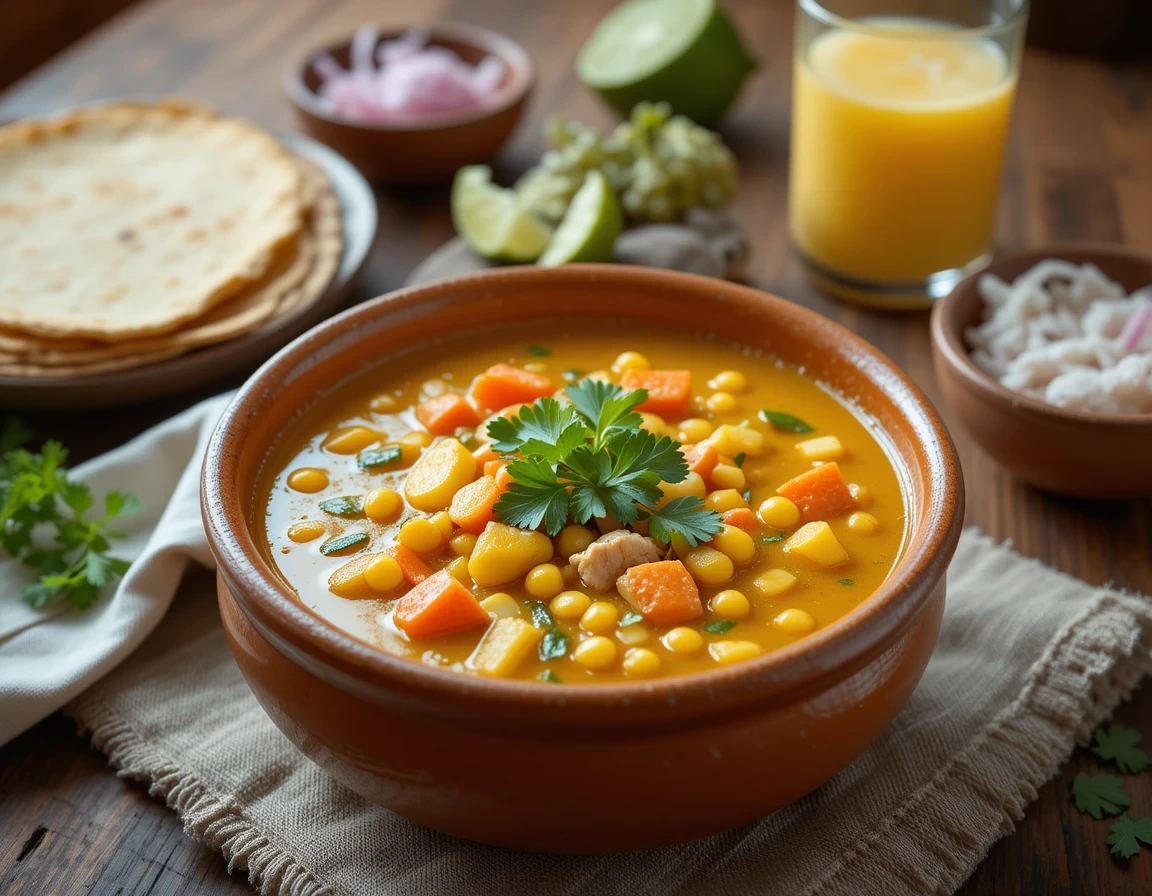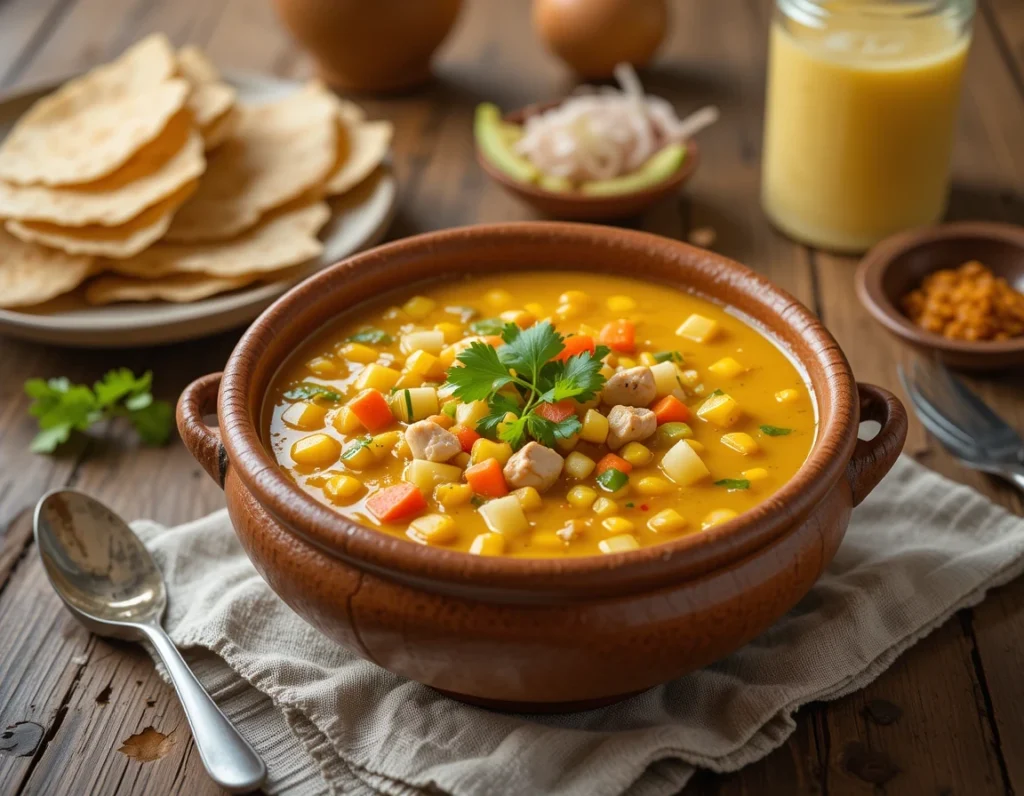El Salvadoran Corn Soup: 7 Easy Steps to Make It at Home

Did you know that soups featuring corn are among the most comforting and nutrient-dense traditional dishes worldwide yet many people overlook the magic of El Salvadoran Corn Soup? This rich, creamy, and hearty soup is more than just a meal it’s a flavorful hug in a bowl that reflects the culinary soul of El Salvadoran.
Whether you’re craving something warm and nostalgic or looking to expand your cooking repertoire with Latin American flavors, this soup hits the mark. In this post, you’ll learn exactly how to prepare El Salvadoran Corn Soup in 7 simple steps, using everyday ingredients with authentic flair.
Table of Contents
Ingredients List
Before we get started, let’s talk about what you’ll need to make this delicious soup come to life. These ingredients blend sweet, savory, and earthy flavors to create a dish that’s deeply satisfying and uniquely El Salvadoran.
Main Ingredients:
- Fresh corn kernels (3 cups or 4 ears of corn) – for a sweet, creamy texture
- Chicken thighs (1.5 pounds, bone-in preferred) – adds rich flavor and depth
- Chicken broth (6 cups) – the savory base
- Yuca (cassava) (1.5 cups, peeled and cubed) – adds body and starchy richness
- Chayote (1, peeled and cubed) – for subtle sweetness and texture
- Green plantain (1, sliced) – a traditional thickener and flavor booster
- Onion (1, chopped)
- Garlic cloves (3, minced)
- Cilantro (½ cup, chopped)
- Oregano (1 tsp)
- Cumin (½ tsp)
- Salt and pepper – to taste
- Lime wedges – for serving

Optional Substitutions:
- Replace yuca with potatoes if unavailable.
- Use vegetable broth for a vegetarian version.
- Swap chicken with turkey or tofu for dietary preferences.
Tip: Using fresh corn is ideal, but frozen corn will also work in a pinch!
Timing
Here’s what to expect time-wise when preparing this flavorful dish:
- Prep Time: 20 minutes
- Cook Time: 70 minutes
- Total Time: 90 minutes
That’s 20% faster than many traditional Latin American El Salvadoran Corn Soup recipes, making it perfect for a weekend meal without hours of effort.
Step-by-Step Instructions
Step 1: Prep the Base
In a large pot, toast a 2 teaspoon of oil over medium heat. Add chopped onions and garlic. Sauté until golden and fragrant, about 3–5 minutes. This step builds the savory foundation of your soup.
Pro Tip: Add a pinch of salt early it helps the onions break down and enhances flavor from the start.
Step 2: Brown the Chicken
Add chicken thighs to the pot and brown on each side for 4–5 minutes. This caramelization deepens the flavor and gives the broth richness.
Step 3: Add the Broth and Spices
Pour in the chicken broth, then stir in oregano, cumin, salt, and pepper. Let it poach uncovered for 15 minutes.
Insight: Allowing this step ensures your broth becomes deeply aromatic and seasoned to perfection.
Step 4: Add Starches and Veggies
Now add yuca, chayote, and sliced plantain. These traditional ingredients give El Salvadoran Corn Soup its creamy, starchy body and distinctive character.
Step 5: Simmer Until Tender
Cover and simmer for 30–35 minutes or until all vegetables are fork-tender and the chicken is cooked through.
Step 6: Add the Corn and Cilantro
Stir in the fresh corn and chopped cilantro. Simmer for an additional 10 minutes. This stage releases the natural sweetness of the corn and brightens the dish.
Step 7: Adjust and Serve
Taste and adjust seasonings. Remove the chicken, shred it, and return it to the pot. Ladle the soup into bowls and serve with lime wedges for an optional zing.

Nutritional Information
Then’s an approximate breakdown per serving( grounded on 6 servings):
- Calories: 320
- Protein: 22g
- Carbohydrates: 35g
- Fat: 10g
- Fiber: 5g
- Vitamin C: 45% DV
- Iron: 15% DV
Note: Exact values may vary based on substitutions or portion size.
Healthier Alternatives for the Recipe
Looking to make El Salvadoran Corn Soup even better for your dietary needs? Here are some smart swaps:
- Low-sodium broth – cuts sodium while keeping flavor.
- Skinless chicken breast – for lower fat and calories.
- Cauliflower or zucchini instead of yuca – lowers carbs.
- Olive oil over butter or lard – heart-healthy fat.
- Skip plantains if watching sugar intake.
For a vegan version, remove chicken and use tofu or chickpeas with veggie broth.
Serving Suggestions
Serve El Salvadoran Corn Soup with:
- Warm corn tortillas or fresh bread for dipping
- A side of avocado slices or cabbage slaw
- Pickled jalapeños for heat lovers
- A dollop of crema or sour cream for richness
Pro Tip: Garnish with extra cilantro and lime for added freshness.
Common Mistakes to Avoid
- Overcooking the yuca – it can get mushy. Check for tenderness.
- Skipping the browning step – this cuts out major flavor.
- Using canned corn only – fresh corn brings better texture and sweetness.
- Adding cilantro too early – wait until the end for brightness.
- Not seasoning enough – salt in layers for depth.
Storing Tips for the Recipe
Here’s how to keep your leftovers delicious:
- Refrigerate in an airtight glass container for over to 4 days.
- Freeze for up to 3 months in a labeled container.
- Reheat on the stove with a splash of broth to refresh flavor.
- Meal prep tip: Chop veggies ahead and store them in bags for quicker weekday cooking.

Conclusion
El Salvadoran Corn Soup is the kind of recipe that brings tradition, warmth, and simplicity into your kitchen. With just 7 easy steps, you can enjoy a dish that’s as comforting as it is flavorful.
Ready to warm up your kitchen? Try the recipe, leave a comment below, and don’t forget to subscribe for more delicious updates!
FAQs
What’s a good substitute for yuca?
Potatoes or sweet potatoes are great alternatives if you can’t find yuca.
Is this soup spicy?
Not traditionally, but you can add jalapeños or chili powder if you want heat.
Can I make this vegetarian?
Absolutely swap the chicken with chickpeas or tofu and use veggie broth.
How do I thicken the El Salvadoran Corn Soup naturally?
Plantains and yuca naturally thicken the soup as they cook down. You can also blend a portion of the soup for extra creaminess.
Would you like a printable recipe card or a Pinterest-optimized image to go with this post?
